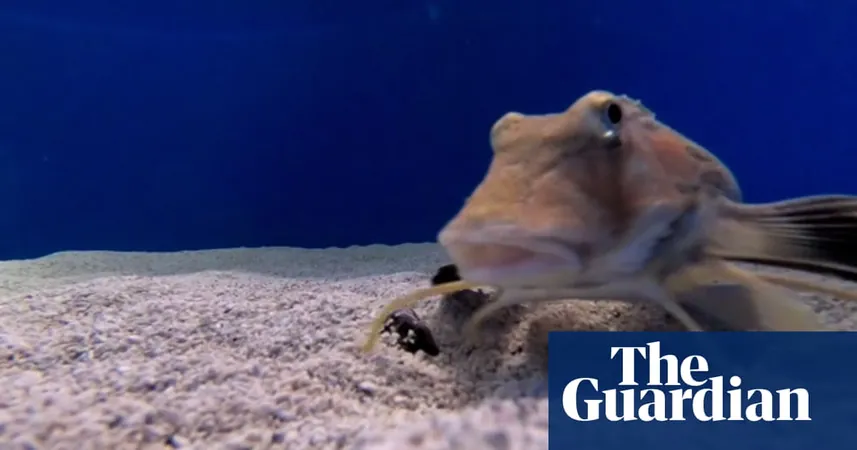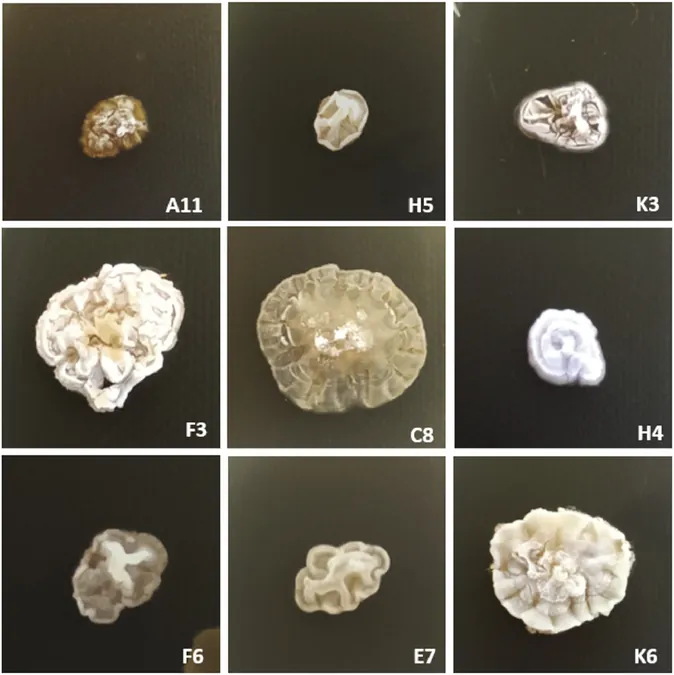
Discover the Remarkable Secrets of Sea Robins: The Fish with Legs That 'Taste' the Ocean Floor!
2024-09-26
Author: Mei
Introduction
In a fascinating twist of nature, researchers have uncovered the unique abilities of sea robins, a peculiar species of fish that possess leg-like appendages. These unconventional limbs allow them not only to scuttle across the ocean floor but also to ‘taste’ the substrate in search of buried prey, revealing an incredible adaptation that merits our attention.
Physical Adaptations
Sea robins sport six modified fin structures, which act like legs, enabling them to navigate the seabed and overturn shells in their relentless hunt for food. For years, scientists have speculated about the multifaceted uses of these appendages, and new studies from a US research team have shed light on the genetic and functional characteristics of the sea robins' legs.
Research Findings
In groundbreaking research published in the journal *Current Biology*, the team conducted experiments by placing individual sea robins in tanks filled with water and sand, hiding mussels, mussel extract capsules, and seawater capsules beneath the substrate. The results were illuminating: the species known as *Prionotus carolinus* consistently found all the prey-related items but ignored the seawater, showcasing its impressive hunting skills.
Sensory Capabilities
Further analysis revealed that the nerves within the fish's legs responded when in contact with food-related chemicals, such as amino acids, demonstrating how sea robins process chemical cues to locate their prey. Interestingly, the researchers noted that the fish's ability to find mussels declined with increased burial depth, supporting the hypothesis that they utilize their limbs to detect chemicals released by buried organisms.
Taste Bud-like Structures
Adding to the intrigue, the sea robins’ legs feature small, bump-like structures akin to human taste buds, equipped with taste receptors. According to Dr. Corey Allard, a co-author of the study from Harvard University, this suggests that these fish have cleverly repurposed sensory machinery for an entirely different purpose—emphasizing their evolutionary adaptability.
Comparative Analysis
In a comparative analysis, a different species of sea robin, *Prionotus evolans*, was observed to lack the ability or necessary adaptations to dig for prey, as its nerves did not react to food-related chemicals, nor did its limbs exhibit the same taste receptors. This contrast points toward an evolutionary trajectory where the legs of sea robins transformed from mere locomotion to enhanced sensory tools for detecting food.
Conclusion
Dr. Allard emphasizes that studying sea robins can provide valuable insights into the process of evolution, especially in how new traits develop and how organisms adapt their cognitive and sensory functions. As these 'crazy little weird fish' reveal their remarkable traits, they challenge our understanding of evolutionary biology and could educate us in ways that more conventional research models, like mice, simply cannot.
In summary, sea robins hold a treasure trove of information about evolutionary adaptations, sensory perception, and how life can innovate in the most unexpected ways. Keep your eyes on these extraordinary fish—they may help unlock secrets of evolution that have puzzled scientists for decades!



 Brasil (PT)
Brasil (PT)
 Canada (EN)
Canada (EN)
 Chile (ES)
Chile (ES)
 España (ES)
España (ES)
 France (FR)
France (FR)
 Hong Kong (EN)
Hong Kong (EN)
 Italia (IT)
Italia (IT)
 日本 (JA)
日本 (JA)
 Magyarország (HU)
Magyarország (HU)
 Norge (NO)
Norge (NO)
 Polska (PL)
Polska (PL)
 Schweiz (DE)
Schweiz (DE)
 Singapore (EN)
Singapore (EN)
 Sverige (SV)
Sverige (SV)
 Suomi (FI)
Suomi (FI)
 Türkiye (TR)
Türkiye (TR)